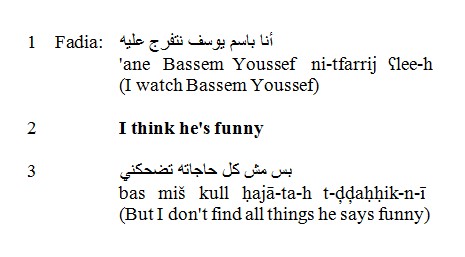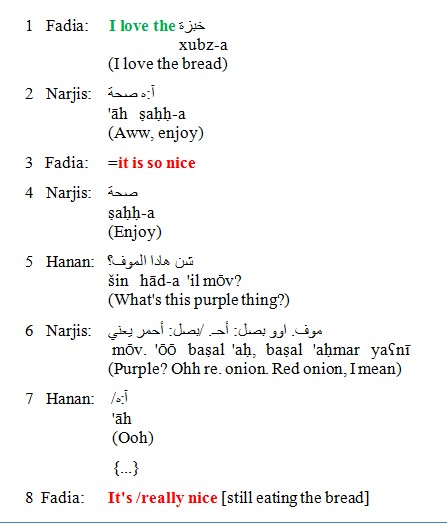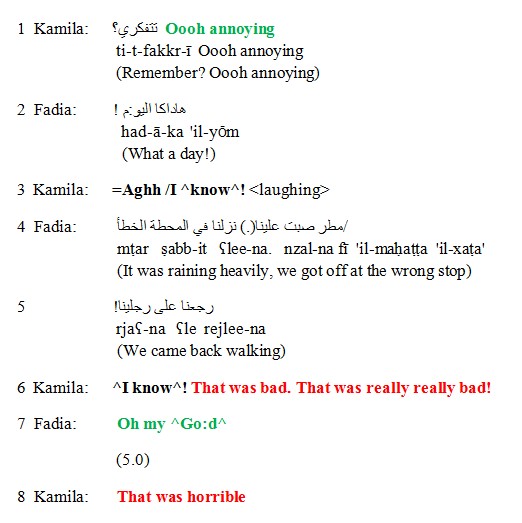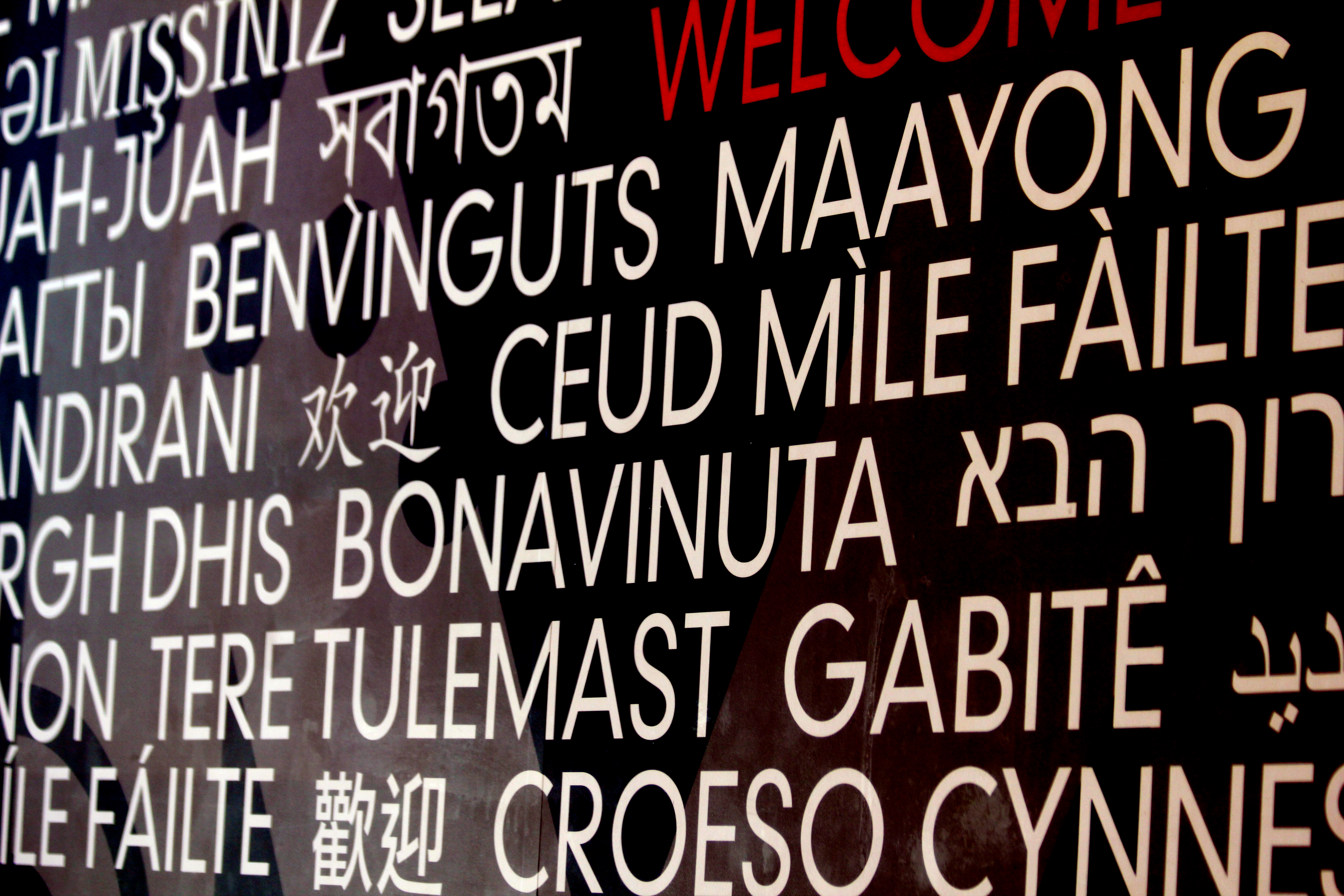Is it the case that bilinguals have dual identities or divided loyalties where they associate each aspect of their identity with a specific language or a national group? In this post, I will explain why things are a bit more fluid when it comes to language and identity in bilinguals. To do so, I am going to share some findings from my current research project about how a group of Arabic-English bilingual sojourners in the UK manage their use of two languages in their everyday interactions.
Let me begin by explaining ‘code-switching’. Code-switching is the practice of going back and forth between two or more languages or dialects, and using them in the same sentence or conversation. This is something my bilingual friends and I do a lot amongst ourselves, and anyone who is bilingual will know what I mean. Mostly we couldn’t explain exactly why we switch languages: it’s like making subtle social moves and certainly not a way of ‘showing off’ around monolinguals.
My research participants are a group of six adult female Arabic speakers in their 20s and 30s. Five of them came to the UK from Libya as international students about seven years ago and are currently living in the city of Manchester. In addition to these five ‘late’ bilinguals, who learnt English later in life, the sixth participant is an ‘early’ bilingual and grew up speaking Arabic and English in the UK. The participants form a small social circle and have known each other for a considerable amount of time.
In my research I record natural conversations of this group of bilingual friends in order to explore the link between the different ways speakers code-switch and the ways they ‘do’ identity work, i.e. perform inter-personal aspects of their identities and achieve interactional/communicative effects through code-switching. A lot of code-switching is for practical reasons to fill a linguistic gap for a word or concept but I am particularly interested in instances of code-switching where speakers are expressing emotions, making evaluations or achieving in-group bonding. To demonstrate this, I am going to discuss three examples.
In the first example, Fadia, a late bilingual is switching from Arabic to English, then back to Arabic again. She first switches to English to make a positive judgement about the Egyptian comedian Bassem Youssef, then switching back to Arabic to express an almost diametrically opposed view about (some of) his performances.

The first code-switching instance from Arabic into English marks the transition the speaker makes from stating a fact (’I watch Bassem Youssef’) to making an evaluative judgement (‘I think he’s funny.’). The next instance of code-switching from English back into Arabic provides a second judgement restricting the scope of the first one (‘but I don’t find all things he says funny’).
In the example, the speaker is using both languages to convey her message but she is clearly not assigning a particular function to one language or another. In this example, as in much of my data, there is not much of a difference between the functional role of Arabic and English.
Having said that, there seems to be a general pattern that is emerging in the data that English – or rather switches from Arabic into English – is used to take up ‘expressive’ stances, particularly positive ones. This pattern is particularly marked when it comes to compliments, positive evaluations, shows of appreciation and the expression of excitement. Although Arabic can, of course, be used for all of these, utilising English repeatedly for achieving the same purpose stands out, especially when considering that English is the L2 for these speakers. The next example aims to illustrate this.

Here, Fadia repeatedly shows her appreciation of the bread that Narjis made – all of them in English in a conversation that is otherwise conducted in Arabic. However, switching into English is not only used for positive emotions but also to express negative emotions, as in the next example.

Notice at how many points Kamila and Fadia switch to English to express their emotions? When comparing the communicative function of Arabic and English here, one cannot fail to notice that Arabic is mostly used for recounting the factual aspects of the story while English is used to express evaluative stance towards that story.
A possible explanation for the code-switching patterns observed here might be that it is driven by certain attitudes and social meanings that these speakers share and assign to the English language. In one-to-one semi-structured interviews with my participants, each of them talked about her positive experience in the UK and the positive light in which they perceive British people, whom they generally describe as ‘nice’ and ‘polite’. Given these positive attitudes it is maybe not surprising that they adopt the expressive language of the target community. Adopting English styles of emotional expression must also be understood against the cultural norms of the Arab world in general and Libya in particular, where a preference exists for expressing emotions in a more subtle way. In (Libyan) Arabic, things tend to be left unsaid, emotions are mostly implied and expressed non-verbally.
In sum, the code-switching utilised by this group of friends is not as arbitrary as it may seem at first blush: it can best be understood in relation to the evaluative positions speakers take. Through their use of Arabic and English these bilinguals move between different zones and carve out their own “third” space as an expression of the new and complex reality they are experiencing as bilingual immigrants.
This article was originally published by Language on the Move under a CC-BY licence



Rate and Review
Rate this article
Review this article
Log into OpenLearn to leave reviews and join in the conversation.
Article reviews